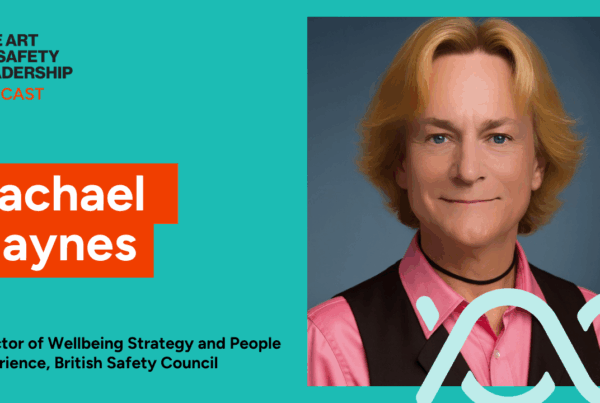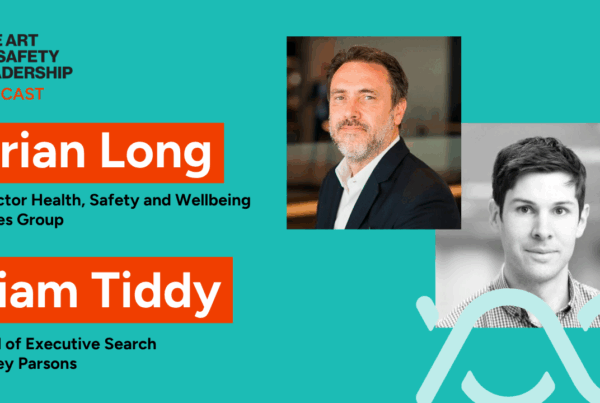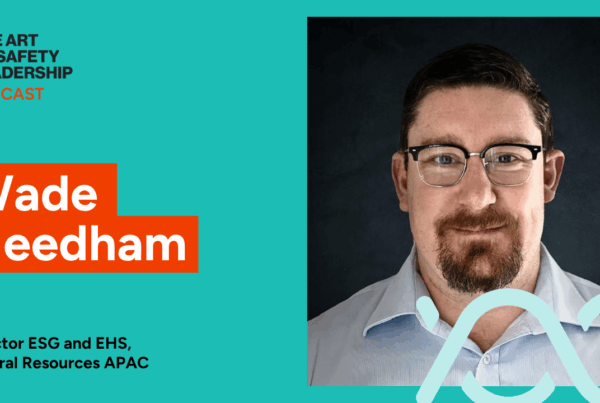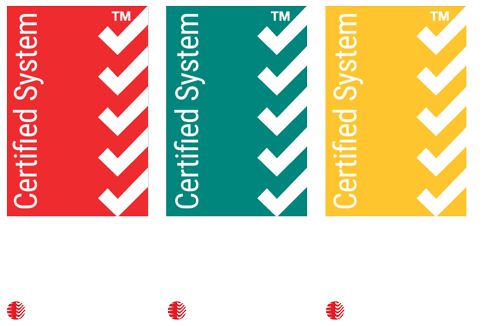Modern organisations have reached a plateau. Despite decades of regulation, audits and compliance systems, serious harm rates remain stubbornly high. The global safety profession has built formidable technical expertise — yet, as Oliver Sanandres argues in The Art of Safety Leadership podcast, the next performance leap will not come from more rules. It will come from changing ourselves first.
“Any safety professional that wants to change the narrative from compliance to care really needs to change themselves first.” — Oliver Sanandres
When compliance becomes the ceiling
For many leaders, legal compliance has become the definition of success. Executives can cite the Health & Safety at Work Act and know the penalties for getting it wrong. But few connect the dots between safety, productivity and performance. As Oliver reflects, “I’m always blown away by how little executives actually know about safety. They don’t link enhanced performance with safety — that’s the bit that blows me away the most.”
This is the first tension in the safety leadership transformation. When safety sits in the risk register rather than the business strategy, it remains a minimum standard, not a value creator.
“Safety is not about getting everything 100 per cent right. Safety is about how we fail — how we fail safely — and what we learn when we fail.” — Oliver Sanandres
The compliance-driven mindset also constrains the profession itself. Traditional qualifications such as NEBOSH or IOSH pathways produce excellent technical specialists but rarely prepare people to influence boards, translate risk into ROI, or lead change through trust. As Oliver notes, “We lack some of the softer skills — being able to influence, push back, talk the language of business, be seen as an equal.”
Early lesson: what’s imagined versus what’s real
Oliver’s formative insight came not from a boardroom, but from his time in the British Army.
“In the field,” he recalls, “you’re taught the right way of doing things — all the processes and procedures — but the sergeant who’s done it for years says, you don’t need that, you don’t need that. It’s work as imagined versus work as done.”
That real-world dissonance shaped his later approach: what looks compliant on paper often fails in practice. Real safety begins with understanding how people actually work, and designing systems that fit that reality – not the other way round.
The turning point: Auckland Council
When Oliver moved from the UK to New Zealand to lead Auckland Council’s health and safety transformation, the organisation was still reeling from a fatality. “It had massively rocked the organisation,” he remembers. “They really wanted to do something.”
The moment called for courage and authenticity – and Oliver’s approach flipped the script.
From reports to real conversations
Instead of flooding executives with data, he made a simple declaration in a leadership meeting: “I’m taking this report as read.” Then he told stories. He shared the lived experience behind the numbers — incidents, learnings, people. The board engaged instantly.
“So,” he decided, “I’m going to stop presenting reports and start doing video walk-arounds. Every month I’ll visit a different site, film it on a GoPro, and play it back.”
Suddenly safety had a face. The HR Director’s reaction — “That looks really dangerous!” — triggered questions, curiosity, and, most importantly, ownership.
Visible leadership as a catalyst
This shift birthed the Understanding What We Manage programme, encouraging executives to get on-site not to inspect, but simply to learn. “When was the last time you walked around a site just to understand?” Oliver would ask. “Give yourself permission to do that.”
The result was visible leadership in action — GMs and directors engaging directly with frontline teams, understanding daily realities, and bringing genuine stories back to the boardroom.
Culture, confidence and connection
Auckland’s transformation was also deeply cultural. Oliver leaned heavily into Māori values, particularly manaakitanga – care for people and hospitality of spirit – as the foundation for a culture of care. “It was a lovely fit,” he says. “We had a cultural framework on which we could hang safety. It aligned perfectly with the organisation’s bicultural journey.”
The combination of executive curiosity, cultural alignment, and confidence in open dialogue created what Oliver describes as “magic”. Trust grew. Conversations shifted from paperwork to purpose.
Quantifying the change
Safety culture isn’t soft when you can measure it. By tracking engagement, trust, and behavioural indicators, Oliver’s team identified a 12 per cent uplift in safety culture, which correlated with a 42 per cent reduction in harm – equivalent to NZ $7 million in direct cost savings through New Zealand’s ACC injury-compensation system.
That evidence turned anecdotes into business outcomes. “Over 24 months,” he explains, “we improved the management systems, the culture, the engagement – and this translated into X. That’s mind-blowing.” It’s the essence of the safety leadership transformation: making safety relevant to every stakeholder — financial, operational, human.
The new leadership skillset
Oliver’s philosophy centres on trust before influence.
“You can’t influence until you’ve got trust,” he says. “There’s even a trust equation — credibility, reliability, intimacy, and self-orientation. Learn how to earn the trust of people.”
He practices this through daily habits:
- Build rapport — regular one-on-ones with executives that start with people, not spreadsheets.
- Give early warning of bad news — never surprise leaders in a meeting.
- Protect others’ dignity — “Once they know you’ve got their back, they’ll back you.”
“Trust arrives on foot but leaves on horseback.” These micro-behaviours elevate safety conversations from transactional to transformational.
Changing ourselves first
A recurring theme in Oliver’s journey is self-awareness. “I’ve always been quite emotional,” he admits. “I suffer during difficult conversations because I feel the emotions. But certain mentors taught me how to harness that — to feel the emotion and let it go.” That authenticity, he says, is not weakness. It’s leadership. “You have to be vulnerable to grow. If you’re perfect all the time, people can’t relate to you.”
Vulnerability, curiosity and the willingness to be coached are the hallmarks of modern safety leadership. As he tells his own children: “Always be coachable. Feedback is a blessing.”
Bridging the middle: the compressed layer
Even when the board is on side, the real test sits in the “compressed middle.” Middle managers juggle strategy from above and operational chaos below. “They get the poor end of the stick,” Oliver says. “When you get them aligned, you get real payback – but it’s not simple.” His approach? Get in the trenches.
“I’m not here to bring you more process or procedure. Tell me what you need to achieve and I’ll design safety around that.”
This adaptive mindset replaces one-size-fits-all systems with context-driven support. He champions simple tools — three-question incident reports rather than 10-page forms — and leverages data centrally while letting business units shape how they work. It’s a principle of empowerment: push power to information, not information to power.
Embedding safety in the business plan
To make safety sustainable, it must become part of the organisation’s DNA – embedded within strategic and people plans. At his current organisation, Oliver ensures safety is a foundation of the five-year corporate plan:
“We’ve got ambitious goals. Safety underpins them — because you can’t build anything on a wobbly foundation.”
That integration makes safety relevant across functions. For HR, it’s wellbeing. For finance, it’s cost efficiency. For operations, it’s productivity.
He describes it as working with communications teams to weave safety language into every executive message – subtly shifting culture by repetition and association.
“Never talk about compliance for its own sake,” Oliver warns. “Talk about relevance.”
Re-educating the profession
While individual leaders can change their own practice, systemic progress also depends on how the profession develops talent. Current qualification routes still reward technical mastery over executive function. “IOSH, NEBOSH — they stop at the technical world,” Oliver says. “We need rounded professionals who understand business, not just regulation.”
He suggests a radical partnership: safety institutes linking with business schools to deliver executive-level capability programs. “Swap out and understand how business works — what you need to get decisions from X, Y, and Z. That’s vital.” Without that evolution, he argues, “we’ll keep leaving people to their own devices to work it out — and 300 million workers a year will still be getting hurt.”
Failing safely: the ultimate mindset shift
Perhaps Oliver’s most profound contribution is normalising the language of failure.
“Safety isn’t about perfection,” he insists. “You’re never going to prevent every single accident. It’s about how we fail — safely.”
He cites Todd Conklin’s example: cars no longer try not to crash; they’re built to crash safely. Airbags and crumple zones accept failure as inevitable but design for survivability. The same logic must apply to work: anticipate variability, design resilience, and remove fear from reporting. That means creating psychological safety so people speak up early, not hide mistakes. “If we can eliminate blame,” Oliver says, “we get more data, more learning — and that’s where progress happens.”
Technology, data and the next frontier
The conversation inevitably turns to technology and AI, which Oliver views as accelerators if used wisely. “I’m excited,” he says. “If we harness it right, we can really do some amazing stuff — linking operational metrics with safety, predicting risks, keeping things fresh.”
At Amazon, he helped redesign metrics away from lag indicators like LTIs toward operational precursors — connecting stow buffer rates and process delays directly to potential safety outcomes. “It made operations excited about safety — because it was their data. That’s the next step.”
Lessons for the next generation
When asked for advice to emerging safety leaders, Oliver is unequivocal:
- Be deliberate about your development. “Don’t just chase the diploma. Know what kind of leader you want to be.”
- Find mentors and peers. “We’re lucky to have communities like LinkedIn. Ask questions, seek help, stay curious.”
- Embrace feedback and vulnerability. “Be coachable. You’re never the finished article.”
“The gateway to engagement is trust. Once people engage, that’s the beginning of the good stuff.” — Oliver Sanandres
The new art of safety leadership
Oliver’s journey embodies the essence of safety leadership transformation — moving from compliance to care, from control to connection, from reporting to storytelling.
He reminds us that every board pack, every meeting, every conversation is an opportunity to educate and influence.
If safety professionals can master trust, relevance, and curiosity, they can shift both hearts and minds — and, as Auckland proved, deliver measurable business results.

